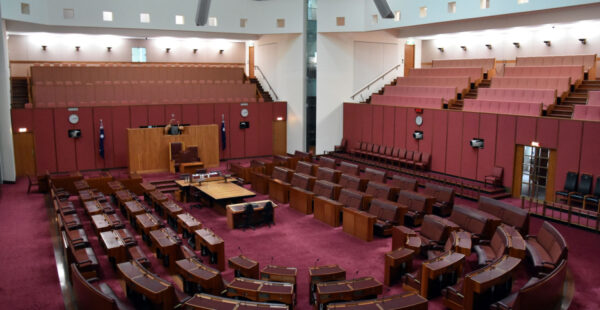Why APRA is wrong on fewer but bigger super funds

Many small-to-medium sized superannuation funds outperformed the mega funds, are closer and more responsive to their members and a Financial Newswire roundtable sponsored by Zurich Life and Investments has asked why is the Australian Prudential Regulation Authority driving mergers?
Roundtable participants
LW Laura Wright, CEO NGS Super
JB PCH Peter Chun, CEO, Unisuper
AP Andrew Proebstl, CEO, LegalSuper
PC Paul Cahill, CEO, NESS
DW Darren Wickham, Head of Group Insurance, Zurich Life and Investments
RM Russell Mason, Partner, Deloitte
Chairman: Mike Taylor, Managing Editor, Financial Newswire
AP
It is really interesting when you reflect on the fact that the regulator has brought in this member outcome focus and I think it has been good to change the way we think about a lot of different things and focus our energy even more so for members rather than getting other outcomes but it amuses me somewhat that the regulator when talking about mergers and industry consolidation uses as its defining measure the size of the fund.
I think we should really be focusing on the outcomes a fund can generate for its members and whether those outcomes are on par or superior to other funds out there because it is not a function of size.
I am on record as saying this probably with boring regulatory but all of those of us involved in smaller funds see day by day the benefits of smaller funds and what extra value we bring to our membership and the incredible loyalty that you can build and the high levels of engagement.
And that is without sponsoring football teams and funding major television campaigns across the country.
We just go about doing what we do in a different way but it is a different way which, in my view, generates better outcomes for our members than if they were in a big fund; a monolithic fund.
There have been a couple of comments about AustralianSuper and the level of transfers to AustralianSuper and I think in many ways it is a function of mathematics – they’ve got 2.4 million members and are for the moment one of the largest funds in the country and it is probably inevitable that we experience a material level of outflows to AustralianSuper just by virtue of those numbers.
I don’t think that its about size at all and I also think that the smaller funds have many strategic and competitive advantages in terms of their engagement with members, in terms of designing products and services that suit the particular occupational group they serve and really harnessing a real community feel amongst the membership and getting them engaged with their super because they feel part of that community.
PCH
I can’t comment on small and medium-sized funds but there is a place for them that’s for sure. But from our perspective, scale is important and there are a couple of dimensions. I think for us where we’ve experienced the benefits of scale is certainly on the investments front it has given us exposure to some assets which, for a small fund, would be quite difficult to invest in, particularly in the unlisted space such as infrastructure. So I think in the unlisted space scale really does matter.
And then, of course, I think it helps in terms of the way we can spread our investment spend because in our industry there are a lot of fixed costs to develop systems, to develop digital capability and for us, it does help us to continue to grow.
We don’t think you have to be the biggest but for us and where we sit we believe you have to focus on scale.
LW
Obviously there is a view on our board that an increase in size would be a good thing and that is the reason we went into discussions with Australian Catholic Super but, as everyone knows, that was not to be.
I think it comes down to the basics and the bottom line is that you’ve got to be able to compete on your returns and your fees but its all a matter of what compete means – you don’t have to be the cheapest with respect to fees but if you’re too far away that is something that the average consumer can look at.
And when it comes to returns, people are now more driven by returns than perhaps they were in the past and that’s because of the publicity and some of the stuff we’ve spoken about earlier on. So you’ve got to get the fundamentals right and if you can’t then what are you looking for?
Poor performer and more expensive is something you can’t justify
And then you come to value add and NGS has always said we differentiate ourselves from the larger funds because we’re still servicing people in the workplace and we offer a personal service such as one-on-one member meetings and that sort of thing.
That’s the model we’ve got now and that’s model we had I joined NGS but I’m not convinced that’s a model that will help driver member retention. I’m shaken by the fact that we have been losing high net worth members who have relationships with us to AustralianSuper. That has shaken the belief that if you have a close personal relationship that people won’t move.
Now I don’t know whether that is just a transient thing because we’ve had so much publicity and when it comes to attracting members they don’t know anything about you apart from what is bleedingly obvious such as returns and fees unless they are introduced by a family member or whatever. They don’t know about your personal service or the good people to deal with.
So from acquisition perspective it’s going to be more challenging and from the retention perspective you play to your strength but whether that is going to make a difference to people I’m not so sure any more.
I was sure but I have to admit I’m a little bit shaken by what has been happening.
Maybe superannuation is becoming a commodity like soap powder and people just move around because it’s a lot easier to move around these days.
I’d like to think that a fund like ours can survive long-term but there are signs that that is going to be increasingly challenging.
Getting fees and returns right
PC
NESS is $1 billion and 12,000 members but I am a little bit more optimistic than Laura and I saw this in the meat industry when I first started there. I saw that they had a whole range of different sized companies in the meat industry and what happened after a whole lot of productivity changes was that the big got very big and the niche players survived.
It was the people in the middle ground who got taken out because they couldn’t survive in either group – they couldn’t do a cents per kilo deal with the big boys and they couldn’t do niche down in the small size either so what you saw was the very large and very small survive and the middle ground disappear.
When I look at the very large they are very well established in Australia now but when I look at the middle ground they are trying to work out where they are going. When I look at the niche players that is where we sit.
Now I totally accept that having more money means you can do more things but a lot of the small funds become very good at the outsource model and the ability to use pooled investments to get our returns.
So we are very conscious of how to make those providers work for us to our advantage. We don’t have large internal teams so when we’re buying we’re buying through outsourced models both through investments and service providers. You get very good at that or you fail to the hygiene test.
Coming back to Laura’s point if the hygiene isn’t right and your fees are too high, your returns too low, your service does work and your product is deficient your hygiene will fail and you will fail.
So if you are small fund and you are conscious on the hygiene and you meet those tests on the returns, the costs and the services then a small fund can live in its own little space.
Yes, we lose members to Cbus and AustralianSuper but what we find is the attitude to members with large account balances is a lot stronger to NESS after they’ve dealt with some of those larger funds.
I’ll give you a really good anecdote – when COVID hit and they had the release of member monies and the $10,000 and people getting their hands on it, our contact centre like most blew up but do you know why it blew up? It was because people were calling us to get the information because they couldn’t get it from the big funds.
So, they knew when they spoke to NESS they’d get answered straight away or within 90 seconds yet the very big funds could handle the service to members in a crisis and from that we’ve learnt that members, particularly those with high account balances, place a high degree of importance on being looked after. They have a lot of money. They want to be looked after.
So, if your hygiene is right your members will stick with you. If it isn’t right you will not have a place to play.
JB
I think the thing that will floor all of us is the point that Laura has made and to a lesser extent Paul – members will walk with their feet and they will go to funds that will give them a good experience.
And if they can make head or tail of the heat map and the performance test that will be one thing, but with all the merger and acquisition discussion going on I think there is a role for funds that can give great service, who really look after members.
Now it just might be that you can’t afford to build a whole customer-facing ecosystem and that you have to merge to get that but if you can keep it small and intimate and if you can meet the performance test it might work in those funds’ favour.
There were plenty of small to medium funds which flew through the performance test and large funds which didn’t. So if the performance test can work in your favour and you can give great service however big or small you are I think there is room for you.
But the question is with stapling – how long is that going to last?
RM
I am in Paul’s camp because I think there is a role for small funds and trustee boards can decide whether or not they need to merge.
We conduct a lot of outsourcing tenders on behalf of corporates and, yes, we look at sustainability and whether we think the fund is going to be around for a period of time but just because a fund is very small or very large does not discount it from the tender process.
We’ll look at investment performance, the insurance offering and whether it meets the needs of the employer’s staff, the ability to service the employer and the members and if you’ve got employees on the North-West Cape or Darwin, can the fund service them? And, does the fund understand and identify with the occupations of the employees?
We look at a whole lot of things when we work with employers and size is a factor but its not necessarily the driving factor in employers coming to a decision on where their choice fund will be.
And with mergers, yes, some funds will choose to merge for a range of good reasons while other funds will remain niche funds and provided they can manage costs and performance ultimately the market will decide and they deserve, in my eyes, to remain and offer services to the Australian population.
DW
I am going to pick up on Andrew’s point on member outcomes. And in our experience medium-sized funds are closer to employers and have higher levels of member engagement. We see that in insurance in the number of members who choose additional insurance.
But when you model member outcomes the fact that is more important than fees or even investment returns is how much a member is contributing and medium-sized funds being closer to members on average have higher levels of member additional voluntary contributions.
And that is better member outcomes no matter how you model it.
There is policy confusion around this issue of size and scale and I would call it a policy parallel universe because on the one hand APRA is saying that we need fewer and larger funds but at the same time we have 600,000 small self-managed funds – nearly a quarter of the industry.
I would love the Australian Taxation Office (ATO) to run heatmaps over those funds the same way that APRA has. The ATO has the data to do it. I think it would be fascinating to see the outcome.











There needs to be a Royal Commission into the collapse of life insurance advice in this country before it completely…
You are all correct!! But unless you are in the industry you don't see it. There is a great amount…
And the ruminative structure simply makes it un - profitable
TAL continues to increase existing Life Insurance premiums at extreme rates. Thus more people cancel or reduce cover. A self…
@ Anon You're Absolutely correct ! Insurance was always been bought on the needs of consumers and the benefits the…